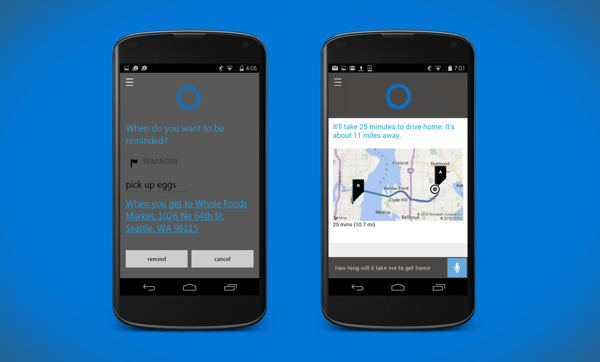Microsoft has officially confirmed that it will be bringing its famed voice assistant – Cortana – to Android and the iOS platform.
Microsoft has been changing up its approach to cross-platform apps lately and has been more generous in sharing its side of the experience with competing platforms. Cortana has been publicized a lot since Microsoft floated the news that the new voice assistant would be giving Windows 10 users an experience unseen on the Windows platform.

According to Microsoft, those familiar with Cortana for Windows Phone or even what can be found on the Windows 10 preview builds, will find it fairly simple and familiar to use, although non-Windows Phone users will run into some limitations. While Android, being the open-source platform that it is, may be able to support most of Cortana’s features, iOS will be far off from that situation, and is likely to support even more limited functionality. Commands like “Hey Cortana” for hands-free activation will not be supported, and nor will be opening up apps with voice commands on both the platforms, well not right away at least.

Integration restrictions apart, the assistant will be able to provide users with notifications support, such as sports results, flights and more. Microsoft will also be throwing in Cortana’s Notebook which keeps track of what you like and will allow users to sync all its data across all platforms as well, which should make Cortana a real help for anyone using two or more different OS platforms.

The team at Microsoft has also unveiled a new Phone Companion app as well for Windows 10, one which will help users sync not just their Windows Phone device, but iOS and Android devices as well giving users the ability to carry their photos and music on the go, thanks to seamless syncing via OneDrive. In addition to that, Microsoft says “you can work on your Office documents from any of your devices, without worrying about moving files around.”
Microsoft has stated that Cortana for Android could be made available as soon as June this year, while the iOS version might have to wait till later this year.
(Source: Microsoft)
You can follow us on Twitter, add us to your circle on Google+ or like our Facebook page to keep yourself updated on all the latest from Microsoft, Google, Apple and the web.

